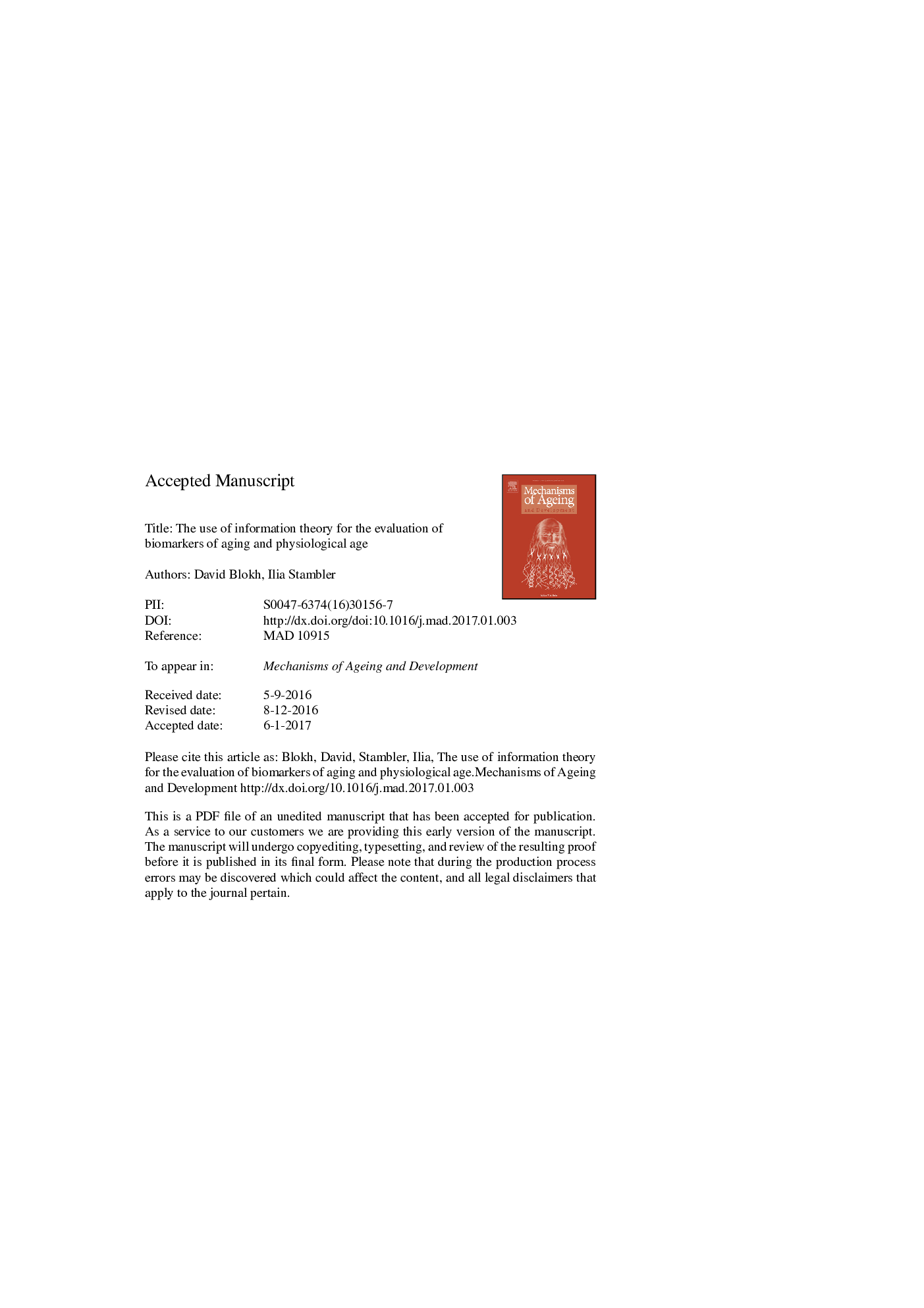| Article ID | Journal | Published Year | Pages | File Type |
|---|---|---|---|---|
| 5503651 | Mechanisms of Ageing and Development | 2017 | 26 Pages |
Abstract
The present work explores the application of information theoretical measures, such as entropy and normalized mutual information, for research of biomarkers of aging. The use of information theory affords unique methodological advantages for the study of aging processes, as it allows evaluating non-linear relations between biological parameters, providing the precise quantitative strength of those relations, both for individual and multiple parameters, showing cumulative or synergistic effect. Here we illustrate those capabilities utilizing a dataset on heart disease, including diagnostic parameters routinely available to physicians. The use of information-theoretical methods, utilizing normalized mutual information, revealed the exact amount of information that various diagnostic parameters or their combinations contained about the persons' age. Based on those exact informative values for the correlation of measured parameters with age, we constructed a diagnostic rule (a decision tree) to evaluate physiological age, as compared to chronological age. The present data illustrated that younger subjects suffering from heart disease showed characteristics of people of higher age (higher physiological age). Utilizing information-theoretical measures, with additional data, it may be possible to create further clinically applicable information-theory-based markers and models for the evaluation of physiological age, its relation to age-related diseases and its potential modifications by therapeutic interventions.
Keywords
Related Topics
Life Sciences
Biochemistry, Genetics and Molecular Biology
Ageing
Authors
David Blokh, Ilia Stambler,
